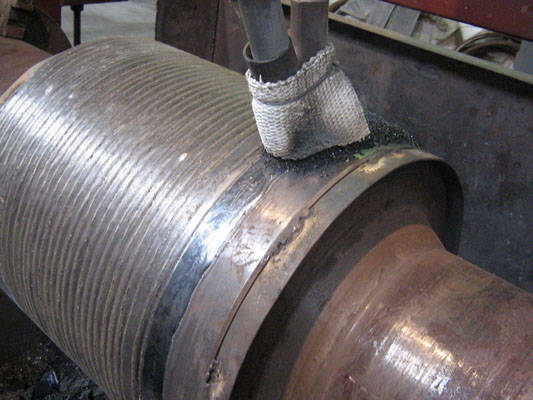Plasma Build Up Welding, as one of the surface strengthening technologies, has the advantages of surfacing various alloy powder materials, dense surfacing layer, low dilution, high production efficiency, low consumption of alloy materials, and low cost. Its surface is corrosion-resistant, wear-resistant, The improvement of high temperature resistance has attracted more and more attention.
At present, iron-based, nickel-based and cobalt-based alloy powders are mainly used for plasma buildup welding. Iron-based alloy powder has good wear resistance and low price, but poor heat resistance and corrosion resistance. Nickel-based and cobalt-based alloy powders have good corrosion resistance and high temperature performance, but the cost is relatively high. Using plasma arc to deposit iron-based self-fluxing alloy powder, nickel-based self-fluxing alloy powder and nickel-based alloy plus wc composite powder on the surface of 16mn steel, through wear tests in different corrosive media, the effects of three kinds of surfacing layers were studied Microstructure, phase composition, hardness and wear resistance.
The influence of different corrosive media on the wear resistance of the same alloy surfacing layer is also different. The wear resistance of the surfacing layer in neutral aqueous medium is better than that in acidic and alkaline medium. This is mainly because a single wear works in water. In dilute HCl solution and dilute NaOH solution, a micro-battery is generated between the compound and the solid solution, and there is an interaction between wear and electrochemical corrosion, so that the surfacing layer is in the dilute HCl solution. And the wear resistance in dilute NaOH solution medium is reduced due to the influence of corrosion resistance.
Comparing the wear resistance of the surfacing layer in dilute HCl and dilute NaOH medium, it is found that the wear resistance in dilute HCl medium is poor, because the surfacing layer can form a passivation film in dilute HCl and dilute NaOH medium, However, the passivation film in dilute HCl is easy to deteriorate, and the passivation film in dilute NaOH medium is not easily damaged, so the wear resistance of the surfacing layer in dilute NaOH medium is better than that in dilute HCl acid. .
The hardness of Ni60 surfacing layer is similar to that of Fe55. The wear resistance of Ni60 surfacing layer in dilute hydrochloric acid solution and dilute NaOH solution is better than that of Fe55, but the opposite is true in neutral water. For the surfacing layer of the same alloy, the wear resistance in the corrosive environment medium of dilute HCl solution and dilute NaOH solution is lower than that in neutral water, and the reduction is more obvious in acidic soil medium.
Post time: Feb-14-2023


